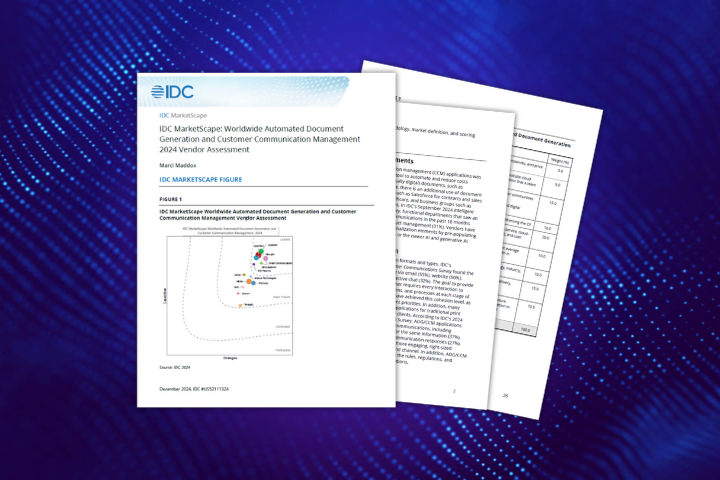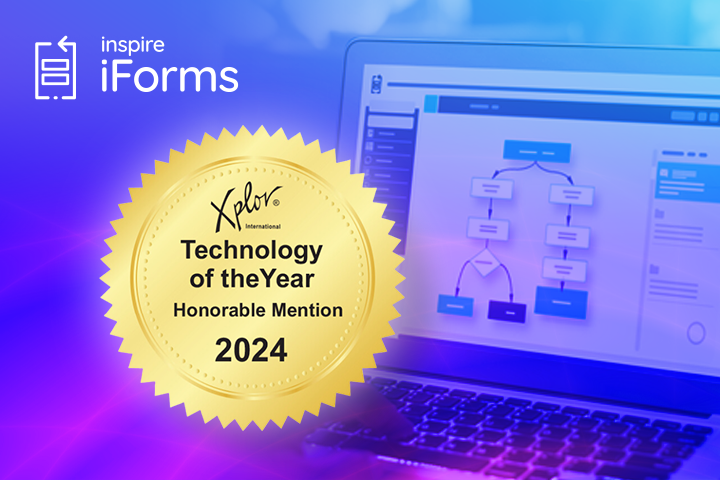Introduction
Today, businesses are adopting automation in a bid to future-proof their operations against the impacts of pandemics and economic downturns. Yet many organizations continue to grapple with manual procurement processes, which exacerbate the pressure on already overwhelmed teams. The implementation of purchase order (PO) automation goes beyond mere convenience. It holds the potential to be a transformative force in strategic decision-making.
In this article, we’ll define PO automation and discuss manual versus automated purchasing processes. We’ll explore the PO process, the benefits of automating the process, and six key features to look for in PO automation software.
What is purchase order automation?
Purchase order automation refers to the process of streamlining and automating the creation, approval, and management of POs within a business. It involves leveraging technology, such as software applications or platforms, to reduce manual intervention and optimize the procurement process.
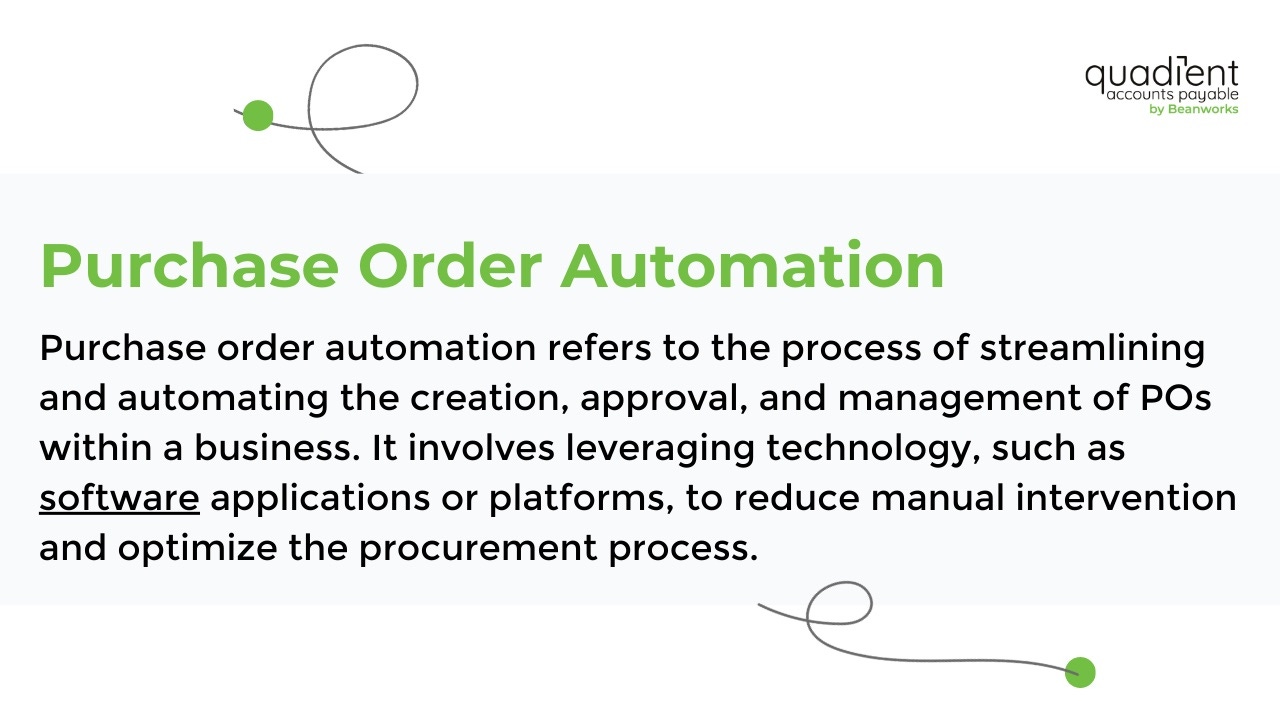
In a traditional manual procurement process, creating POs involves manual data entry, paperwork, and multiple approvals via email or physical documents. Purchase order automation simplifies and accelerates this process by digitizing and automating various steps of the process. Automated PO systems enhance accuracy, improve efficiency, and provide better control over procurement activities.
Manual vs. automated purchasing processes
Manual purchasing processes are labor-intensive, time-consuming, and error-prone. They require manual data entry, paperwork, and extensive communication between stakeholders. This can result in delays, inefficiencies, and increased costs.
Automated purchase order systems eliminate bottlenecks by leveraging technology to streamline the entire procurement cycle. It reduces the likelihood of human error, provides process visibility, and enhances data accuracy. By automating the purchase requisition process, organizations can establish predefined workflows, enforce approval hierarchies, and improve compliance. Automated PO creation ensures consistency and accuracy while enabling faster processing.
Six benefits of purchase order automation
Here are some key benefits of PO automation software:
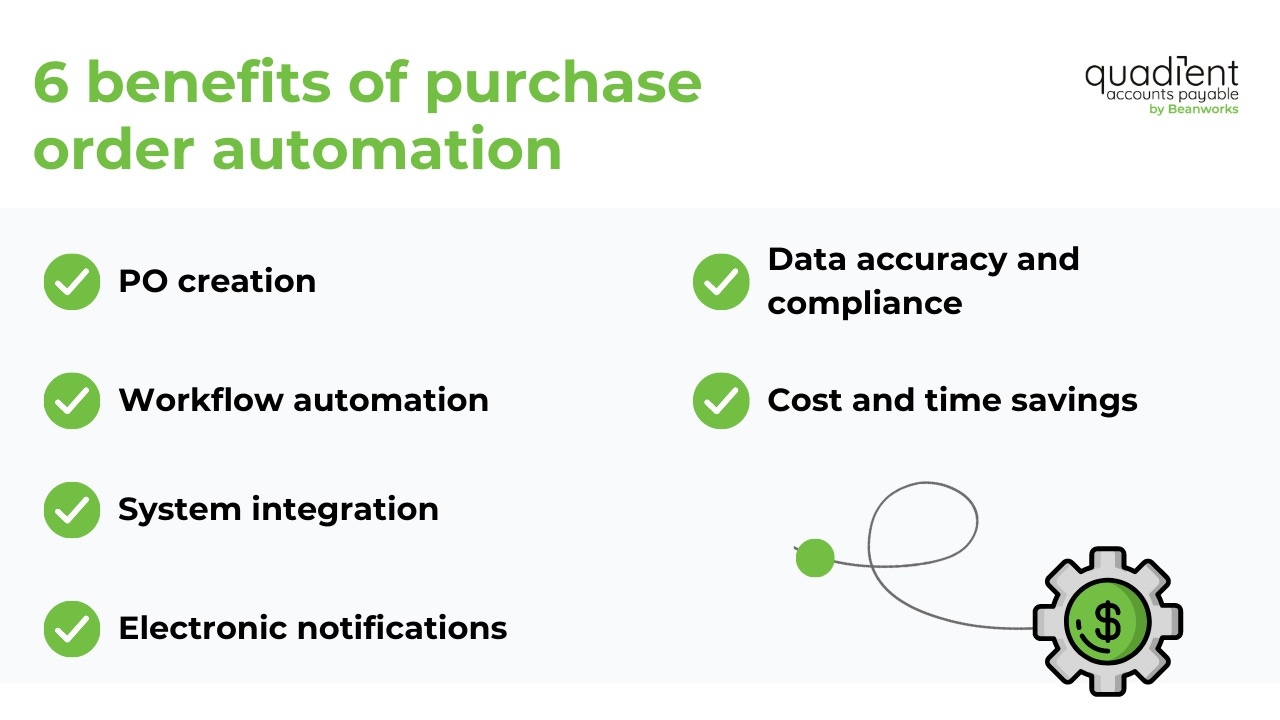
- PO creation: Automation tools enable users to generate POs electronically, eliminating the need for time-consuming, manual paperwork. Relevant details such as vendor information, item description, quantities, and pricing can be imported from a catalog or inventory system.
- Workflow automation: PO automation software facilitates custom approval workflows to expedite the purchase order approval process. These workflows define the sequence of approvals and automate the routing of POs to the appropriate individuals or departments. It ensures a faster order process and reduces delays caused by manual processes.
- System integration: PO software integrates with other systems, such as enterprise resource planning (ERP) software or inventory management systems. This integration enables seamless data exchange, real-time inventory updates, and accurate tracking of POs throughout the procurement cycle.
- Electronic notifications: Automated PO systems issue email notifications to stakeholders, notifying them of new POs, pending approvals, and order status updates. This improved communication between team members increases transparency and reduces the likelihood of errors or missed deadlines.
- Data accuracy and compliance: PO automation reduces the risk of manual errors in data entry and calculations. It enforces compliance with company policies, contracts, and regulatory requirements by implementing a standardized approval process and ensuring proper documentation.
- Cost and time savings: By eliminating manual tasks and streamlining the procurement process, PO automation saves time and reduces administrative costs. It minimizes human error, eliminates the need for physical storage, and improves vendor management, resulting in cost savings for the organization.
Understanding the process
The purchase order process involves the following stages:
Purchase requisition
The purchase requisition stage marks the beginning of the procurement process. It involves employees or departments in an organization requesting the purchase of goods or services.
In manual purchasing processes, requisitions are typically submitted through paper forms or emails, which can be time-consuming and prone to errors. With automation, employees can easily submit requisitions through an intuitive digital interface. Automated systems validate the requisitions, ensure they are properly authorized, and route them to the appropriate stakeholders for review and approval.
Purchase order
Once the purchase requisition is approved, the next step is the creation of a purchase order.
Traditionally, purchase orders were created manually, involving paperwork and manual data entry. PO automation simplifies and accelerates this process. Automated systems generate POs automatically based on approved requisitions, populating relevant information such as item details, quantities, pricing, and supplier information. This reduces the chances of errors and saves time for procurement teams.
Accounts payable
After the purchase order is issued, the AP department comes into play.
In manual processes, AP personnel manually match invoices with purchase orders, verify the accuracy of the information, and initiate payments. Manual reconciliation is not only time-consuming but also prone to errors and discrepancies.
Automation streamlines this process by integrating POs, invoices, and payment systems. Automated systems can match invoices with corresponding purchase orders, flag any discrepancies, and automatically initiate the payment process. This results in faster invoice processing, improved accuracy, and better cash flow management.
Six key features to look for in purchase order automation software
Here are six key features to look for in your ideal PO automation software solution:
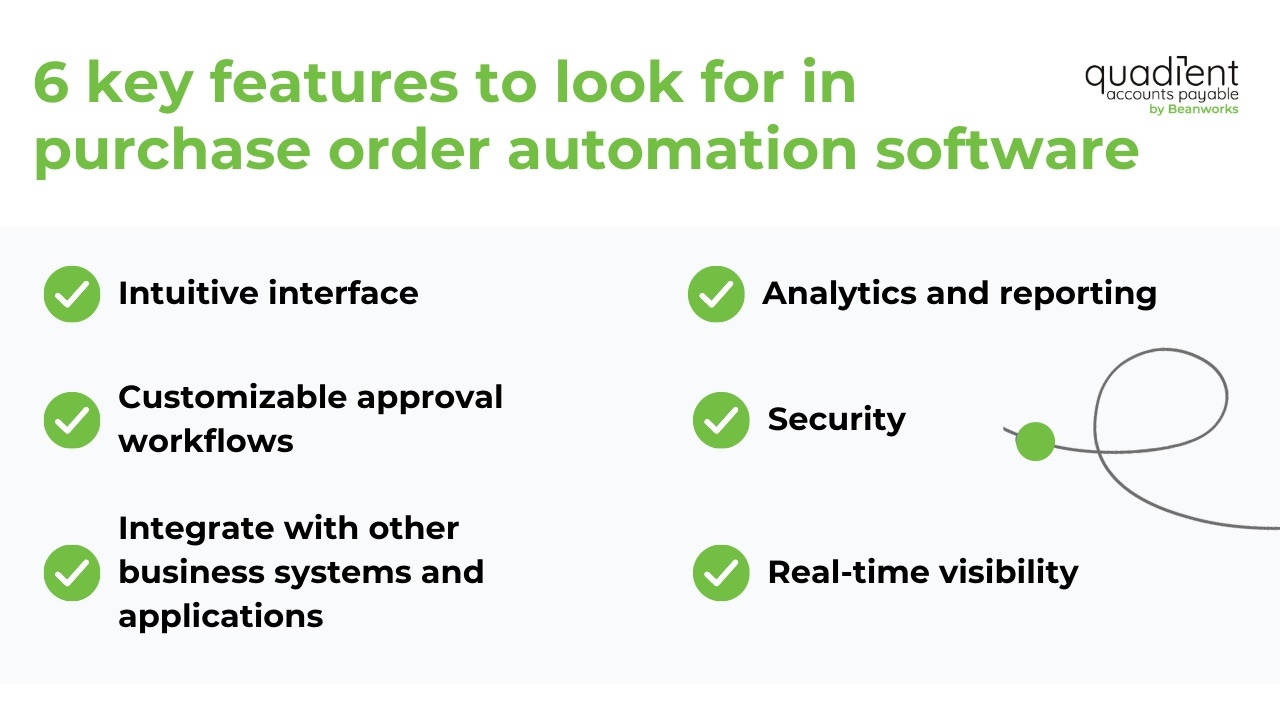
- An intuitive interface ensures that users can easily navigate the system, complete tasks, and access relevant information without the need for extensive training. The software should have a user-friendly design with clear menus, icons, and workflows.
- The software should offer customizable approval workflows to match the unique needs of your business. This feature allows you to define and configure the approval process according to your business rules and hierarchies. You can set up multiple approval levels, define approvers based on departments or roles, and establish escalation paths to ensure timely approvals.
- The software should seamlessly integrate with other business systems and applications, such as enterprise resource planning (ERP) or accounting software. This enables automatic data synchronization, eliminating manual data entry and reducing associated errors. Integration also facilitates a smooth flow of information across departments, enhancing collaboration and efficiency.
- The software should offer comprehensive analytics and reporting features. This allows you to gain insights into your purchasing processes, track key performance indicators (KPIs), and make data-driven decisions. The software should provide customizable reports, real-time dashboards, and visual representations of data. This helps you identify trends, optimize procurement strategies, and better manage costs.
- The software should employ industry-standard security measures to protect sensitive purchasing data. Look for features such as role-based access control, data encryption, and audit trails to ensure that only authorized individuals have access to POs and related information. Regular software updates and compliance with data protection regulations are also essential for maintaining a secure environment.
- The software should provide real-time visibility into the status of POs throughout the procurement process. The software should provide a centralized dashboard where you can monitor the progress of orders, view pending approvals, and identify potential bottlenecks. Real-time visibility enables better collaboration, enhances communication, and ensures that all stakeholders are informed about the status of POs.
Conclusion
PO automation offers significant advantages over manual procurement processes, providing businesses with a transformative solution to streamline operations and enhance decision-making. As we’ve covered, the benefits of PO automation extend beyond process efficiency. As businesses continue to embrace automation as a means of future-proofing their operations, PO automation stands out as a crucial component in achieving operational excellence, enhancing productivity, and staying ahead in an increasingly competitive business landscape.




